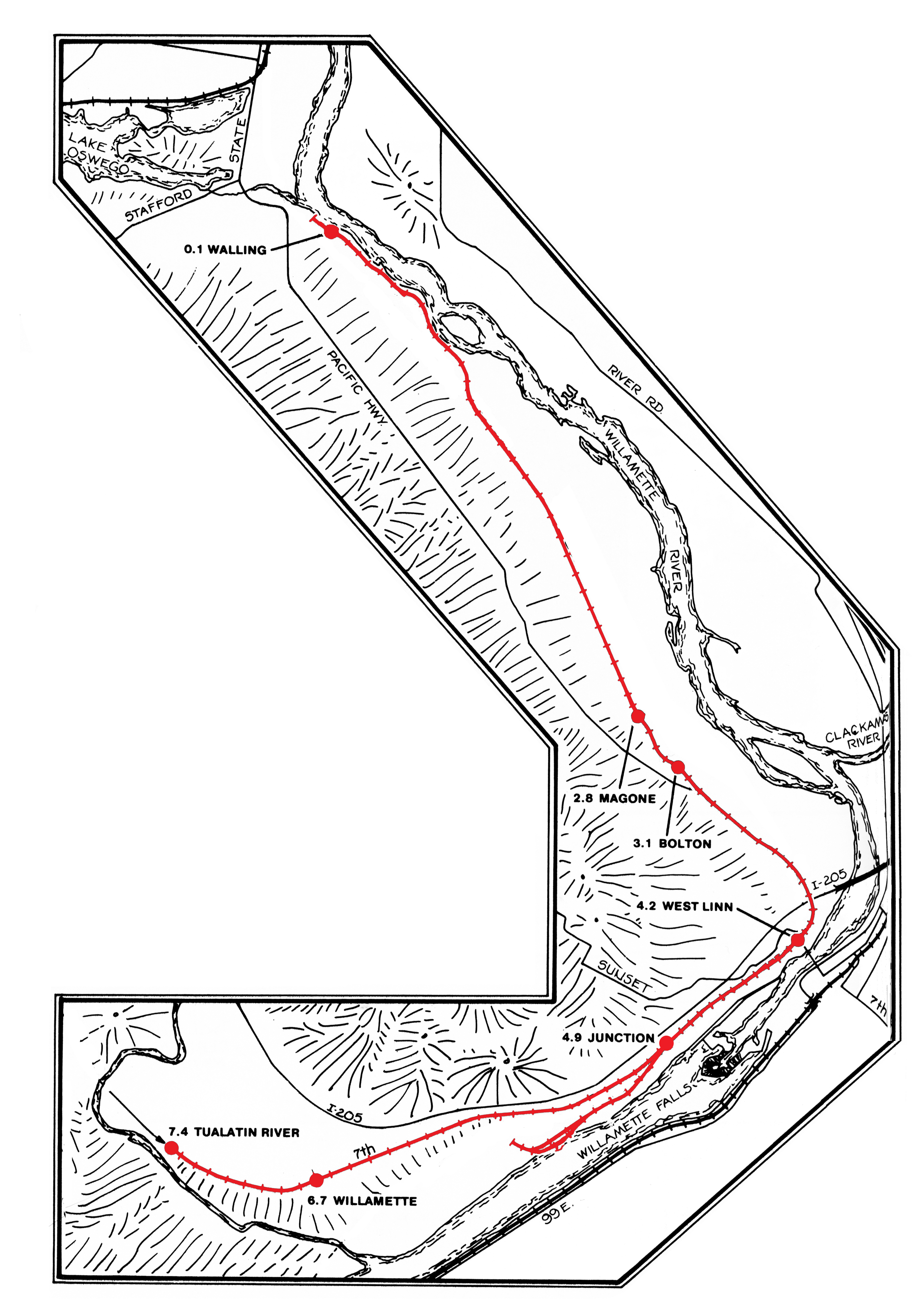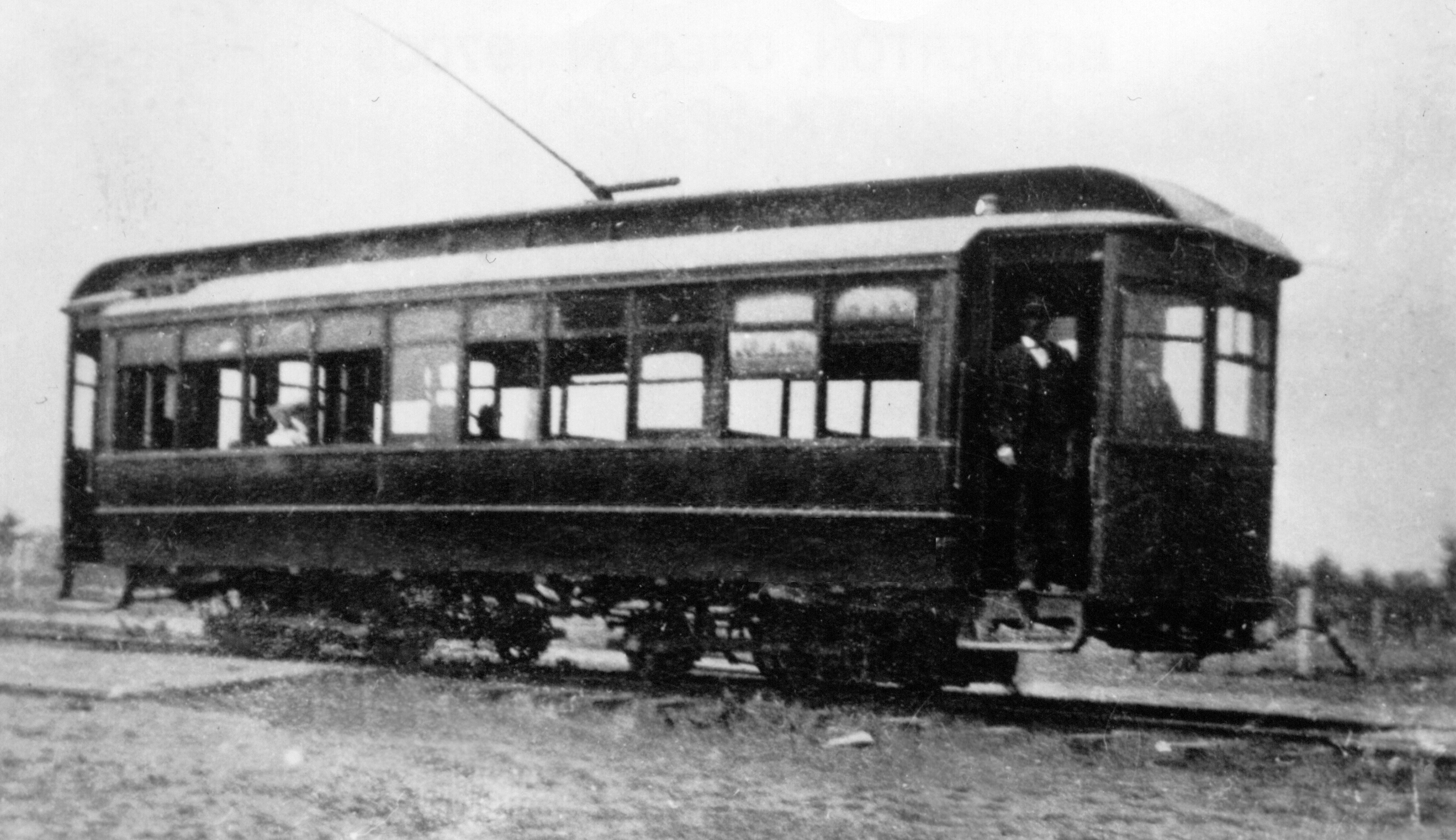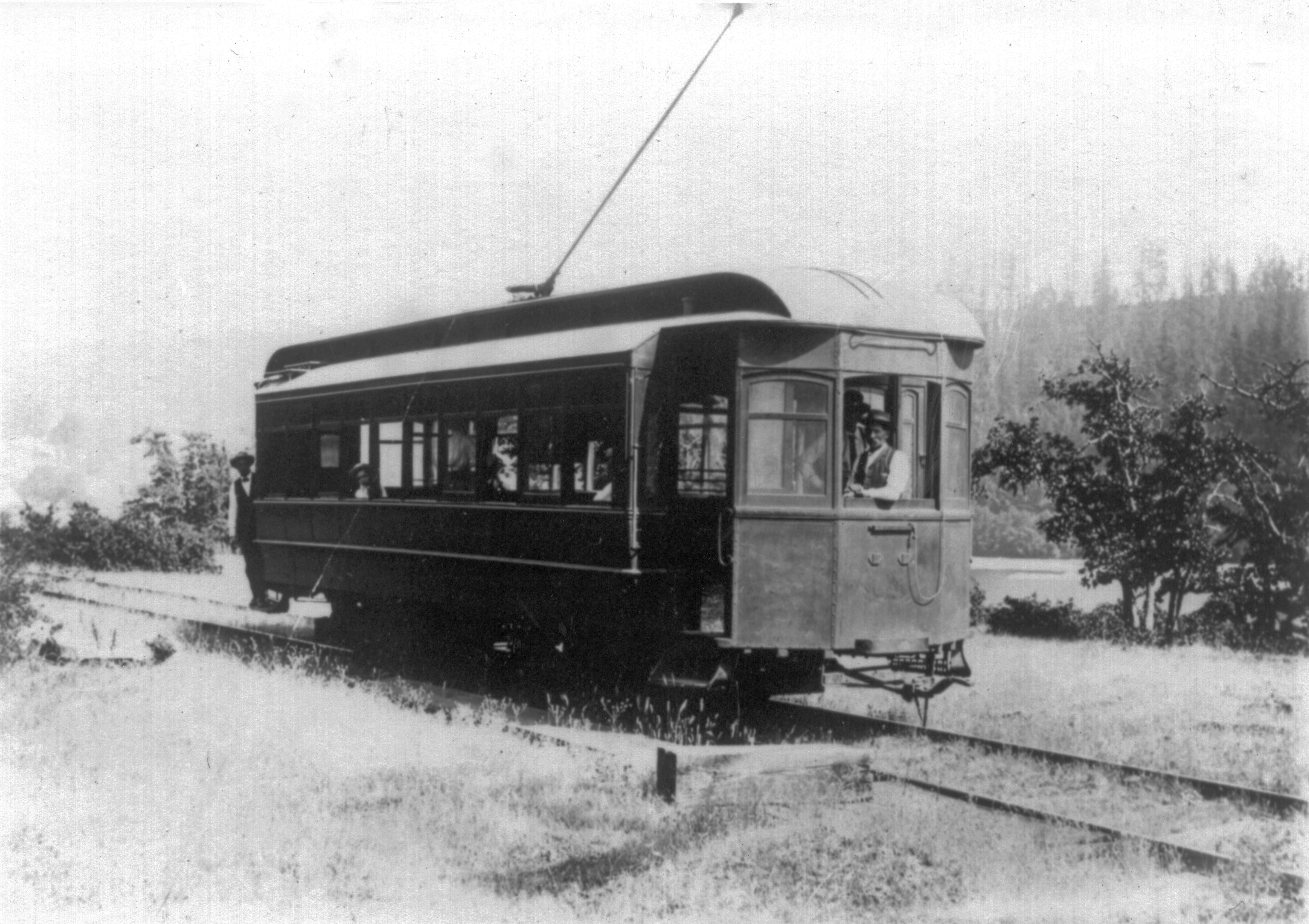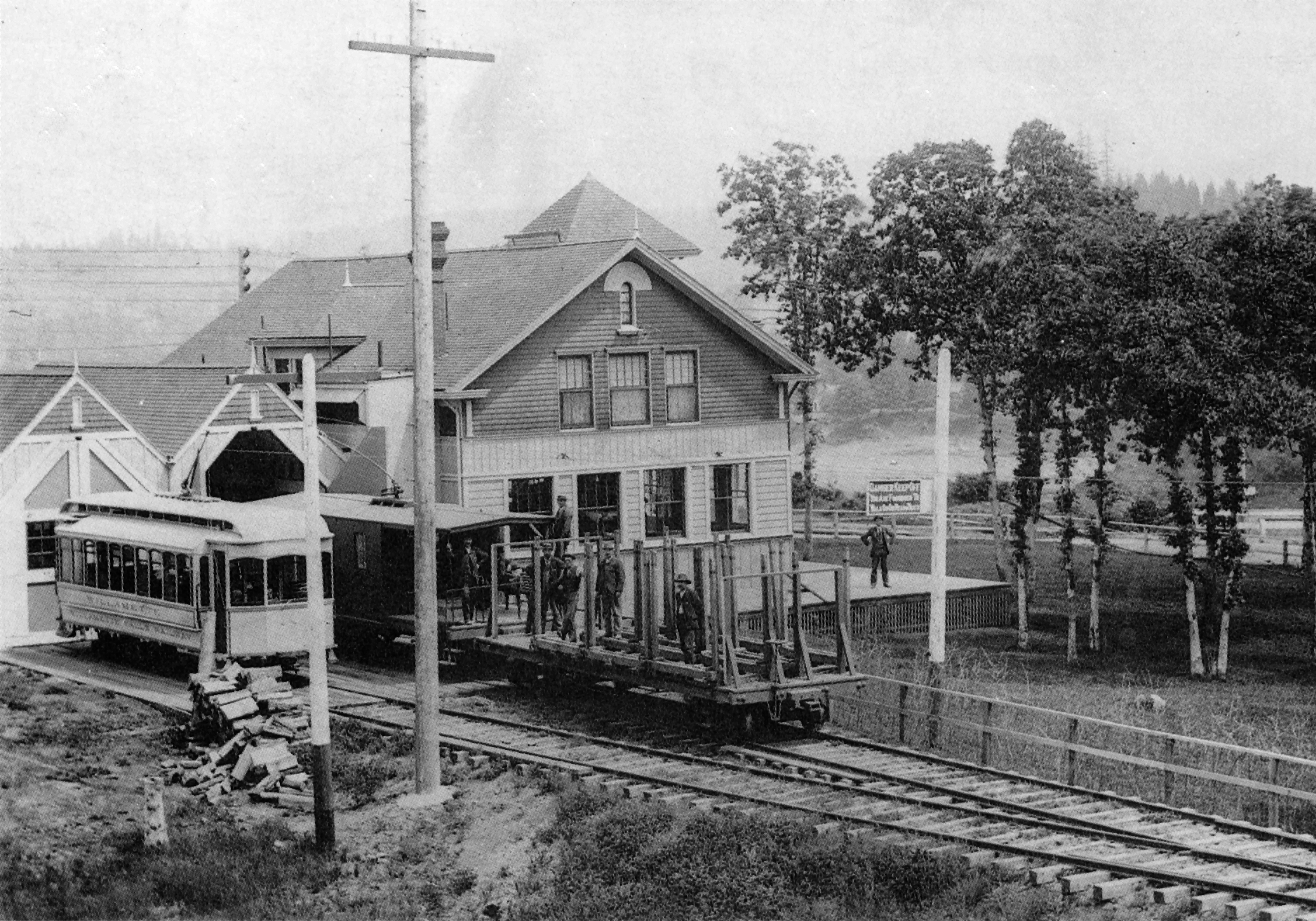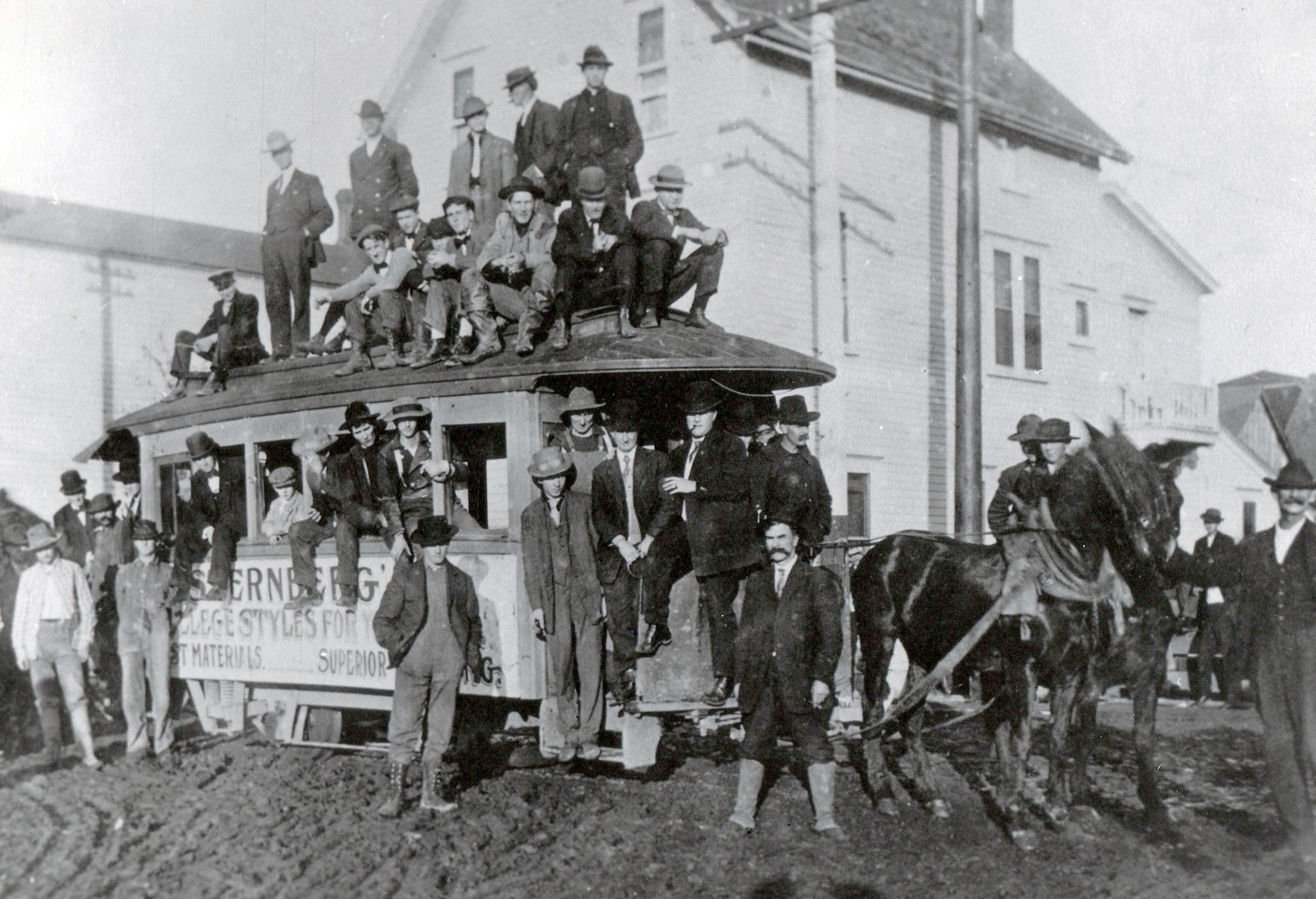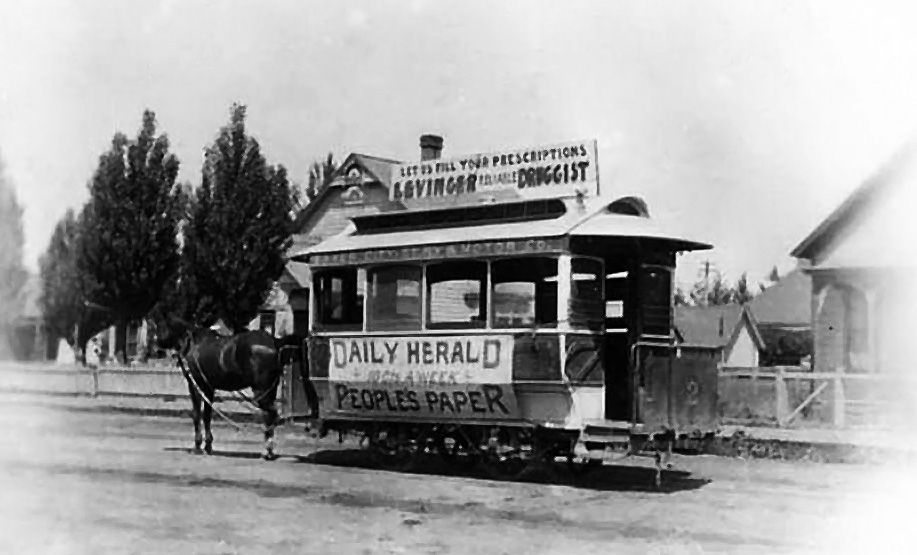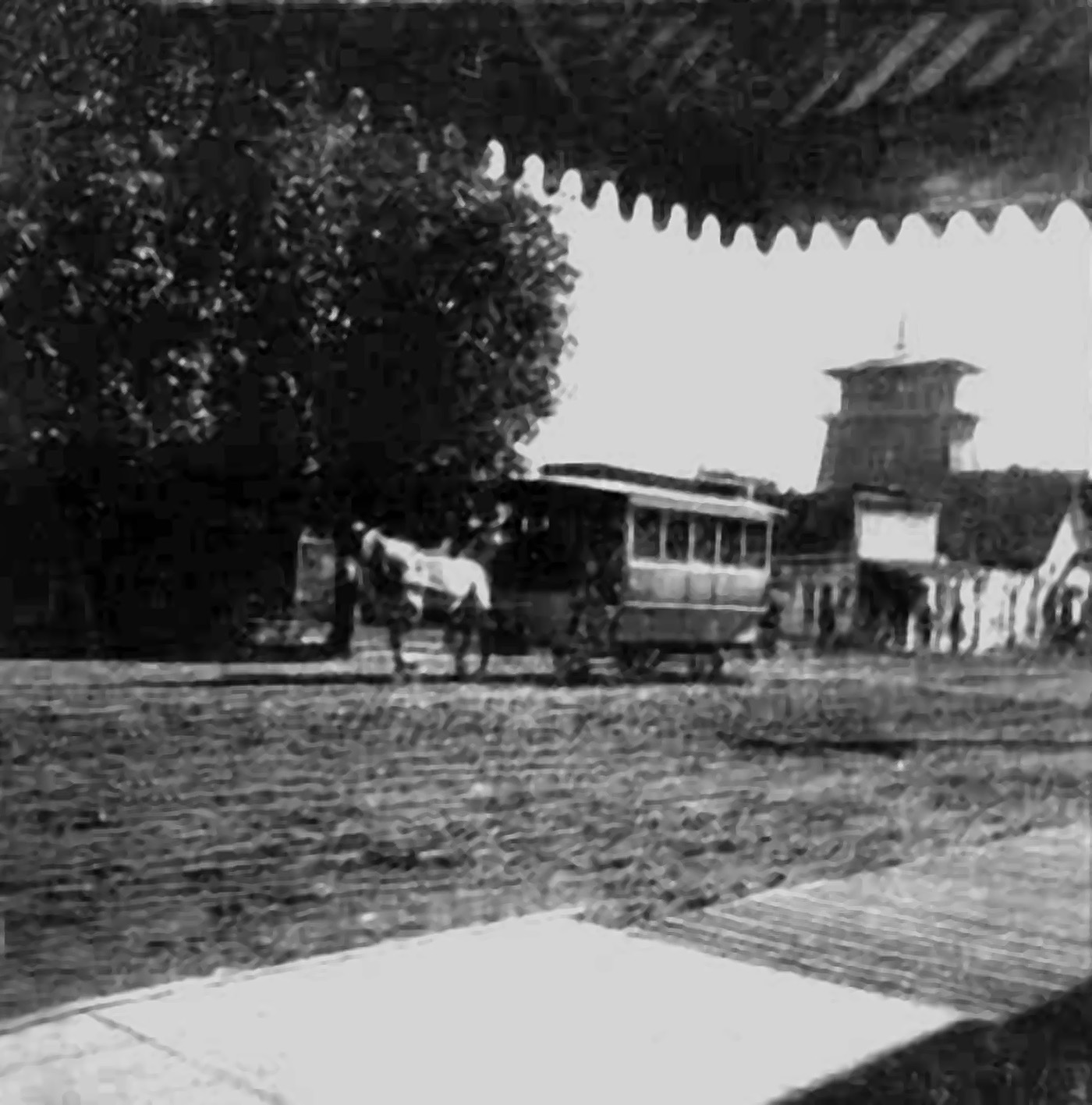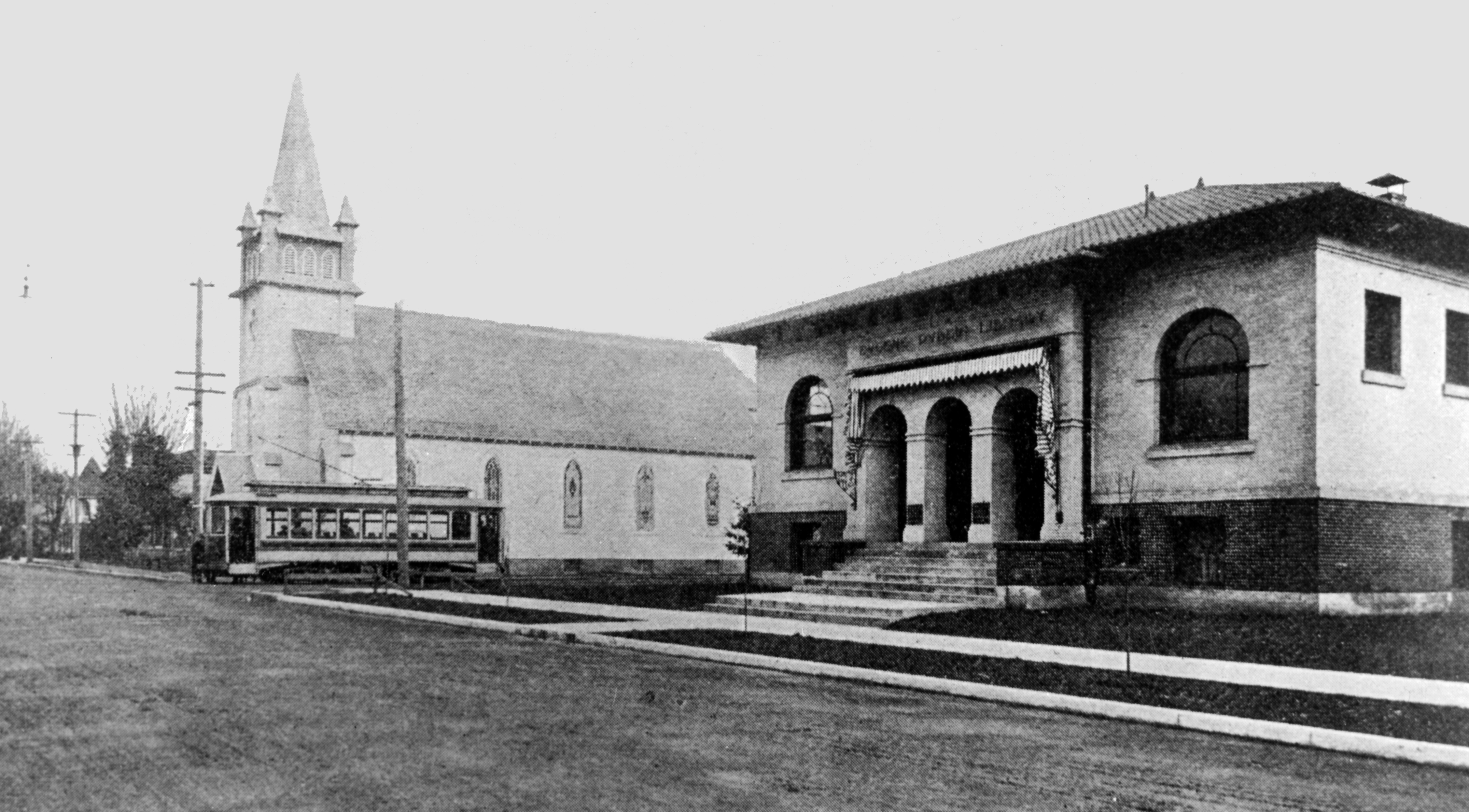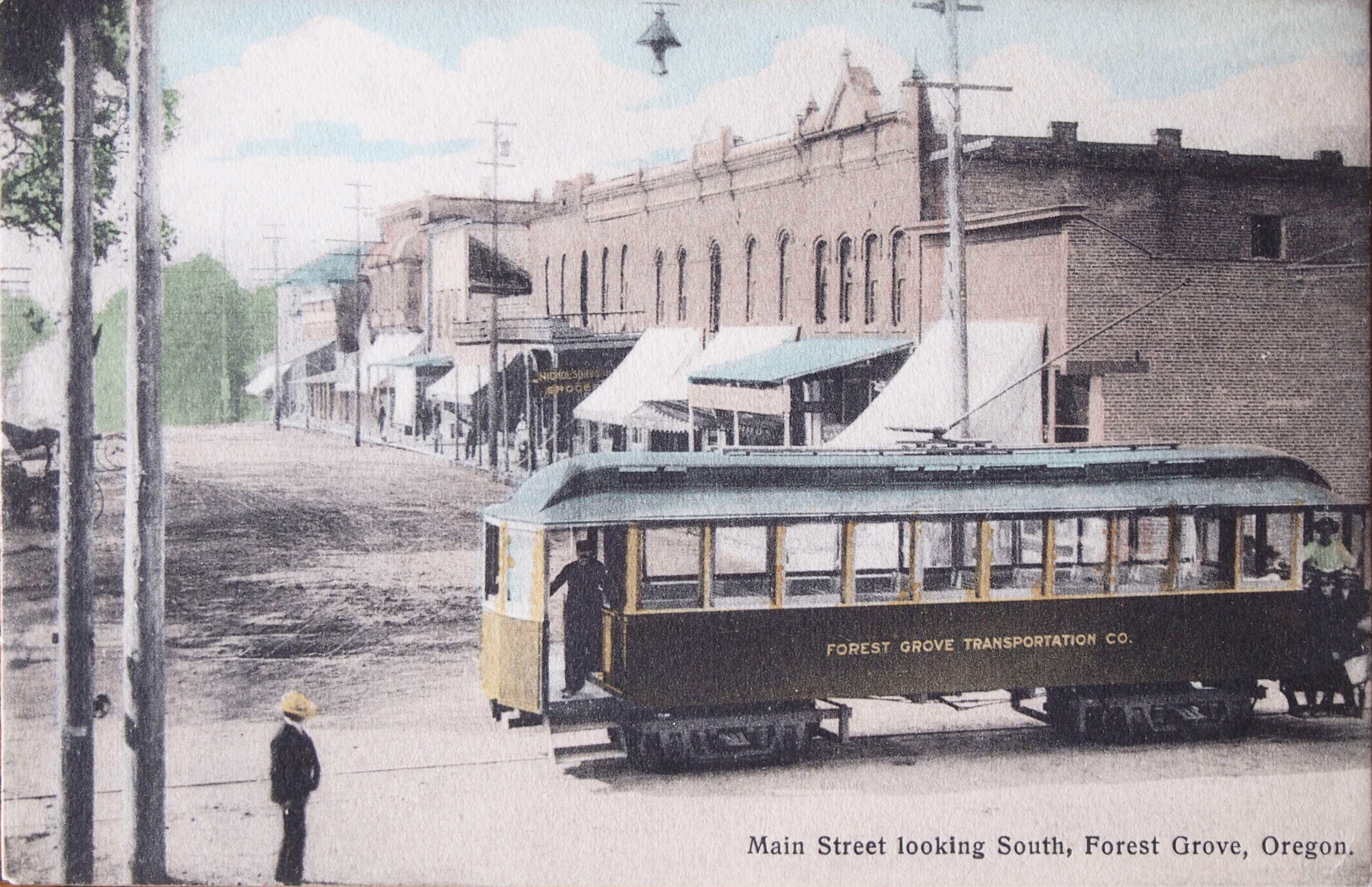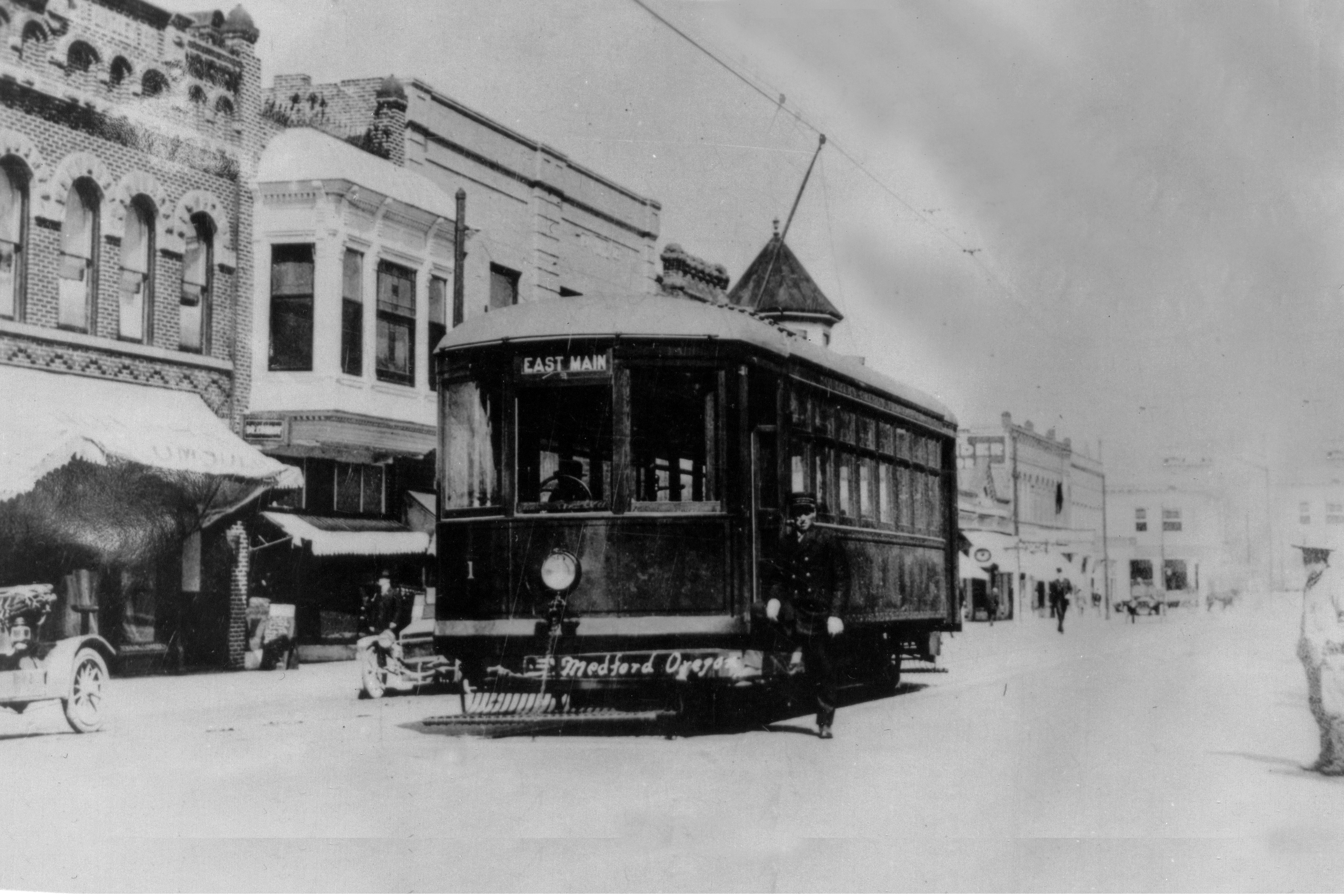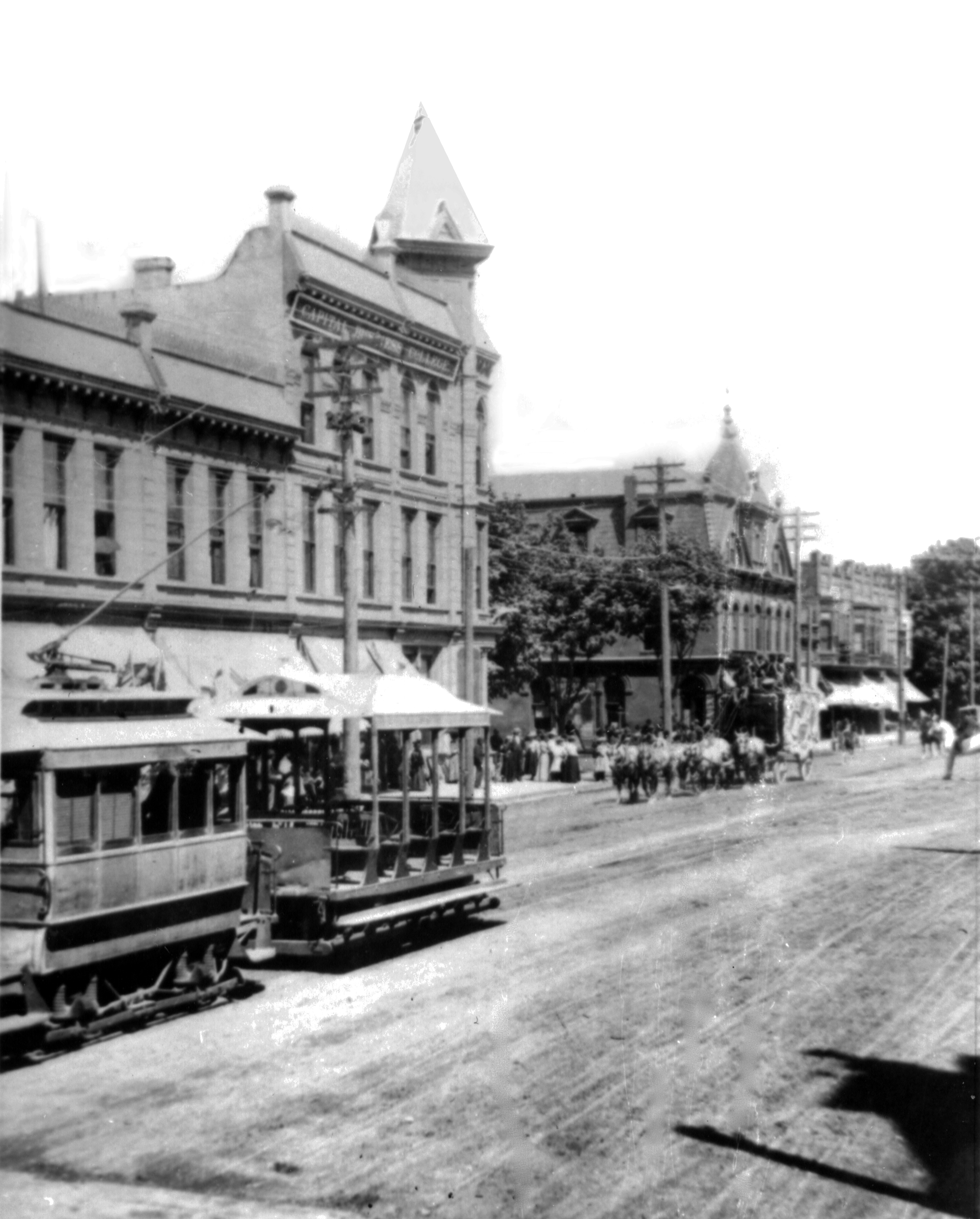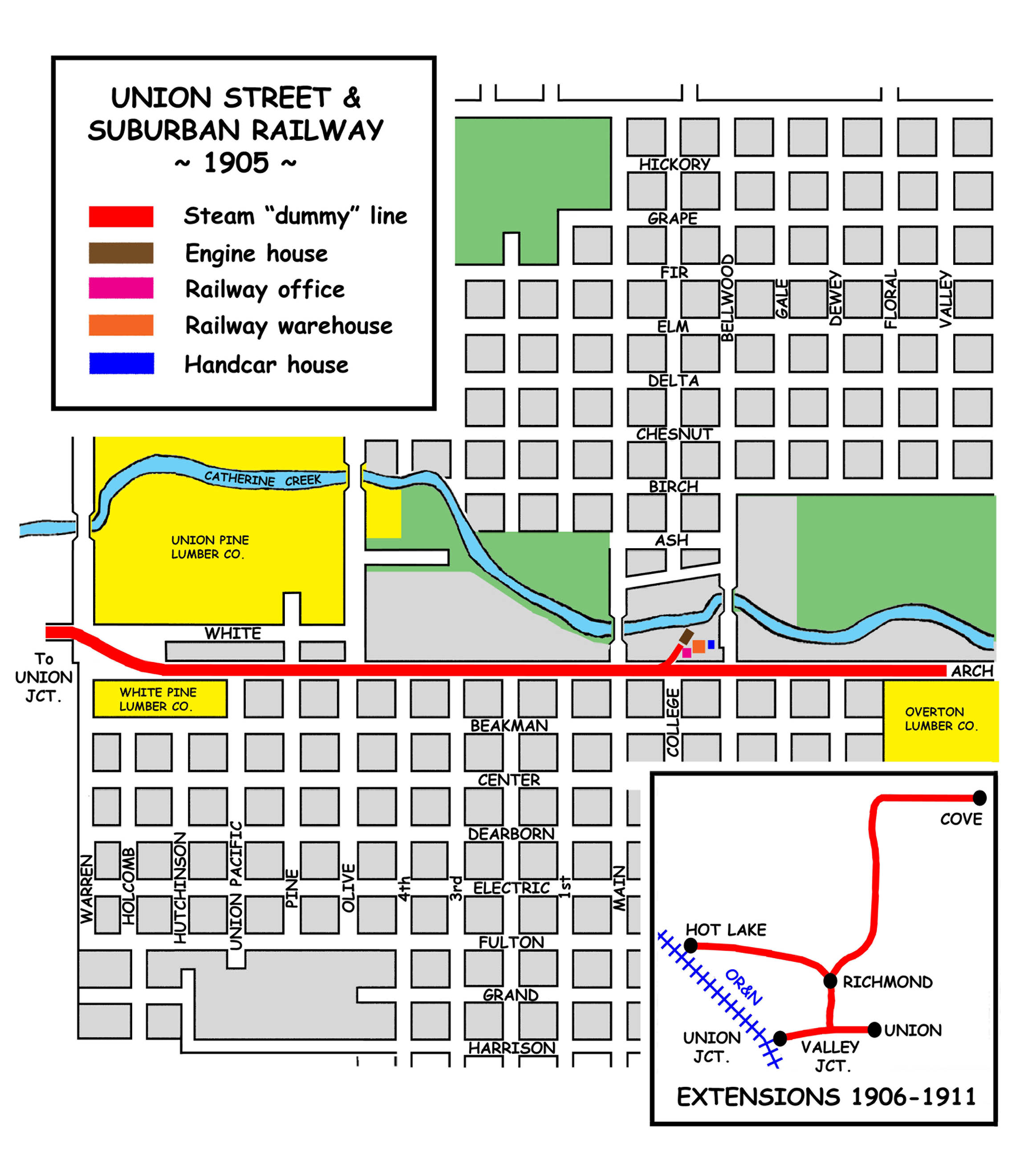The Willamette Falls Railway was built by the Portland General Electric Company (PGE) in 1893 to carry employees from the town of Willamette to its West Linn power station. The original three-mile route, from a point near the Tualatin River to West Linn, opened in February 1894 using a streetcar borrowed from Portland’s East Side Railway. Two new Brill cars arrived soon thereafter.
The railway’s isolated location limited ridership, but it did develop as a lumber carrier. In April 1894, a locally built electric locomotive began hauling cordwood cut along the Tualatin River to the paper mill in West Linn.
On December 31, 1907, ownership of the line was transferred to a subsidiary of PGE, the Portland Railway, Light & Power Company, which completed a half-mile extension north from West Linn to Magone and added one of their interurban cars to the roster. This short addition gave the WFR a recreational destination since Magone Station was a short walk from an amusement park on the shore of the Willamette River named Magone's Park.
The Portland, Eugene and Eastern (PE&E) bought the Willamette Falls Railway on November 8, 1912, and further extended the tracks to Walling, near Lake Oswego. The company also built a spur to the log dump at Willamette Falls and bought a new steeplecab locomotive, No. 100, to handle a growing number of freight (log) trains.
When all PE&E properties became part of the Southern Pacific Railroad in 1915, there were plans to use part of the Willamette Falls Railway right-of-way for an interurban route to Salem, but it was never built.
The Southern Pacific focused on hauling logs, the main source of railway revenue, but independent crews operating the trolley line provided an impressive service to riders. In 1925, streetcars departed from West Linn forty-five times a day, from 6:05 a.m. until 12:25 a.m.
Willamette Falls Railway trackage totaled more than eight miles. Streetcars operated over the 4.6 miles between Magone and Tualatin River, while the West Linn Logger ran to the northern terminus at Walling. Passenger service was discontinued in 1930, three years before the railway ceased operation.
-
![Willamette Falls Railway depot office and barn, West Linn,1909.]()
Willamette Falls Ry, depot, West Linn, 1909.
Willamette Falls Railway depot office and barn, West Linn,1909. Courtesy Richard Thompson
-
![Willamette Falls Railway map.]()
Willamette Falls Ry, map.
Willamette Falls Railway map. Modified from and courtesy Ed Austin and Tom Dill
-
![Willamette Falls Railway trolley, one of two ordered new from the J. G. Brill Co. of Philadelphia in 1893.]()
Willamette Falls Ry, Brill trolley 3.
Willamette Falls Railway trolley, one of two ordered new from the J. G. Brill Co. of Philadelphia in 1893.
-
![Willamette Falls Railway Brill trolley.]()
Willamette Falls Ry, Brill trolley 1.
Willamette Falls Railway Brill trolley. Courtesy Mark Moore
-
![Willamette Falls Railway Brill trolley.]()
Willamette Falls Ry, Brill trolley 2.
Willamette Falls Railway Brill trolley. Courtesy Richard Thompson
-
![Willamette Falls Railway Brill trolley waits for a wood train to clear the line.]()
Willamette Falls Ry, Brill trolley waits for wood.
Willamette Falls Railway Brill trolley waits for a wood train to clear the line. Courtesy Richard Thompson
-
![Willamette Falls Railway depot and barn, 1910.]()
Willamette Falls Ry, Depot and Barn 1910.
Willamette Falls Railway depot and barn, 1910. Courtesy Richard Thompson
Related Entries
-
![Albany streetcar system]()
Albany streetcar system
The Albany Street Railway Company began operation on August 30, 1889, w…
-
![Astoria streetcar system]()
Astoria streetcar system
The Astoria Street Railway Company began horsecar operations on May 9, …
-
![Baker City streetcar system]()
Baker City streetcar system
The Baker City Street Railway Company began operation on June 4, 1890, …
-
![Cherry Grove streetcar and railroad]()
Cherry Grove streetcar and railroad
In 1911, the purchase of the first battery-powered streetcar in the Wes…
-
![Corvallis streetcar system]()
Corvallis streetcar system
On December 17, 1889, a group of real estate developers, led by Zephen …
-
![Eugene streetcar system]()
Eugene streetcar system
The first street railway in Eugene was a mule-powered system that began…
-
![Forest Grove streetcar system]()
Forest Grove streetcar system
In 1906, E. W. Haines, an Oregon state senator and banker, led the Fore…
-
![Klamath Falls streetcar system]()
Klamath Falls streetcar system
In 1906, two companies were granted street railway franchises in Klamat…
-
![Medford-Jacksonville streetcar system]()
Medford-Jacksonville streetcar system
Spencer S. Bullis organized the Southern Oregon Traction Company (SOTC)…
-
![Portland streetcar system]()
Portland streetcar system
The majority of Portland’s oldest neighborhoods owe their location and …
-
![Salem streetcar system]()
Salem streetcar system
The first streetcars in Salem were horsecars that began running between…
-
![Union streetcar system]()
Union streetcar system
On March 27, 1890, the Union Electric Light and Power Company was incor…
Related Historical Records
Map This on the Oregon History WayFinder
The Oregon History Wayfinder is an interactive map that identifies significant places, people, and events in Oregon history.
Further Reading
Austin, Ed and Tom Dill. The Southern Pacific in Oregon. Edmonds, Wash.: Pacific Fast Mail, 1987.
Dill, Tom and Walter R. Grande. The Red Electrics: Southern Pacific’s Oregon Interurban. Edmonds, Wash.: Pacific Fast Mail, 1994.
Labbe, John T. Fares, Please: Those Portland Trolley Years. Caldwell, Id.: Caxton Publishing Group, 1980.
Thompson, Richard. Lost Oregon Streetcars. Charleston, SC: History Press, 2017.


